Find Out the Meaning Behind Each Birth Month's Flower
You probably know your birthstone, but do you know each month also has its own birth flowers? In fact, some months have two!
Different birth flowers have different meanings, and within those, different colors of certain blooms can convey different interpretations as well. Check out your birth month flower and its meaning and get some inspiration for your next gardening project—or for your next birthday bouquet!
Maybe you're looking for the perfect flower for someone else as a gift, or you'd like to find some meaningful floral prints for your home decor—there are plenty of reasons to be interested in birth flowers as well as what they symbolize.
What flower corresponds to your birth month? Find out below!
Birth Month Flowers and Their Meanings
January Birth Flower: Carnation
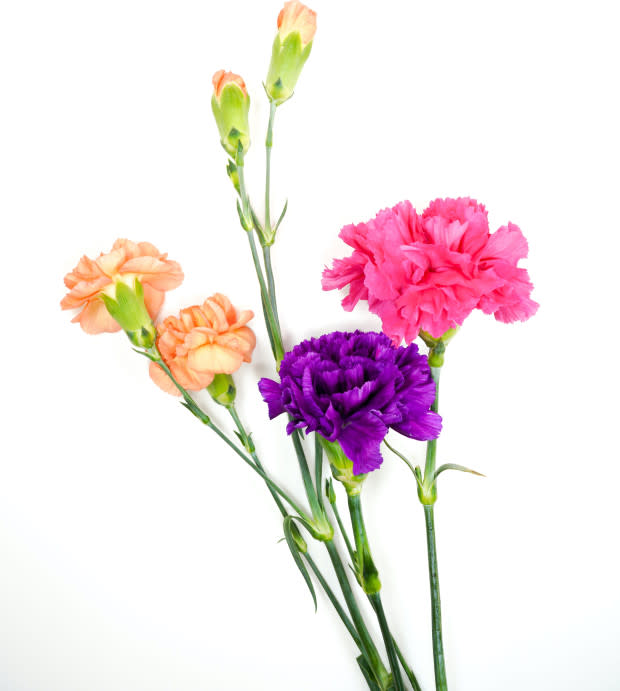
The carnation is one of January's birth flowers, ushering in the year with its slightly spicy scent and color variations.
Though often inexpensive and ubiquitous in flower shops, you should wear your carnation with pride: Originating in the Mediterranean region, the word "carnation" actually translates to "flower of the Gods" in Greek.
Like roses, different color carnations have different meanings, with pink carnations often representing maternal love—which is why you see them so often associated with Mother's Day.
January Birth Flower: Snowdrop
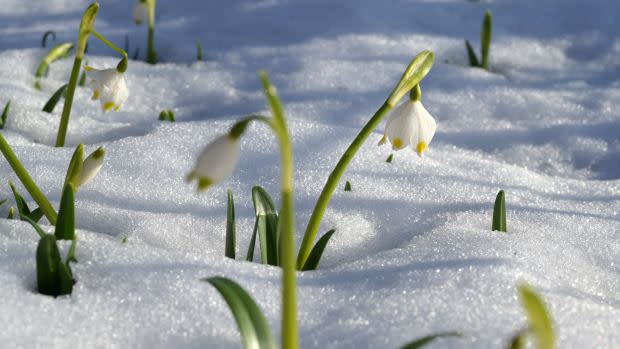
The second January birth flower is the snowdrop. Native to colder climates, snowdrops bloom in winter and early spring, sometimes when snow and frost are still present. The white flowers often represent innocence, they once represented death to certain cultures, and are often used to express sympathy or compassion—as well as the hope that the first blooms bring after a cold, dark season.
Related: Breathe Easier With These 34 Air-Purifying Indoor Plants for Your Home or Office
February Birth Flower: Violet
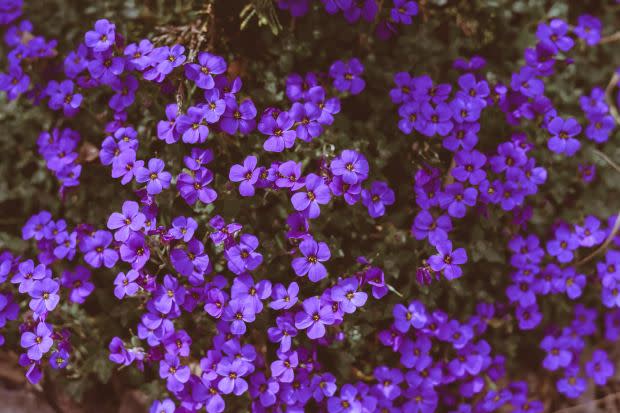
Violets are one February birth flower. Violets are one of the only flora species to bloom during February in the northern hemisphere. While the name obviously suggests these would be purple, violets actually can be blue (yep, those old poem tropes are true!), ivory, white and yellow, as well as any combinations of those. Pansies are part of the violet family.
Violets traditionally symbolize loyalty, modesty and humility (perhaps giving to the old adage of the "shrinking violet"). In Christianity, it was believed that violets bloomed when the angel Gabriel first spoke to the Virgin Mary; ancient Greeks believed violets were a symbol of romance and fertility.
Many violets are actually edible, and some contain salicylic acid, used in aspirin. As such, violets are often used in ancient and herbal remedies for pain relievers.
February Birth Flower: Primrose
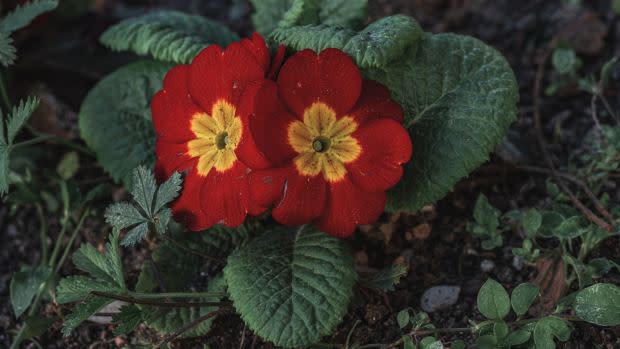
Another February birth flower is the primrose. Despite the name, the primrose isn't actually in the rose family. The first half of its name, "prim," is from its genus "primula," coming from Latin for "first," as the primrose is often one of the first flowers to bloom each spring.
Primrose has long been associated with magic, with Celts believing if you ate a primrose, you'd see a fairy (and that patches of the flower were portals to the fairy realm). It's also associated with young love. Shakespeare fans may like the flower for its mentions in A Midsummer Night's Dream and Hamlet.
Pet owners may want to steer clear of (or at least use strong caution with) primrose, as it's toxic to cats, dogs and horses, though it is edible for humans.
Related: Pet and Plant Parents, Pay Attention! These 29 Plants Are Poisonous to Dogs
March Birth Flower: Daffodil
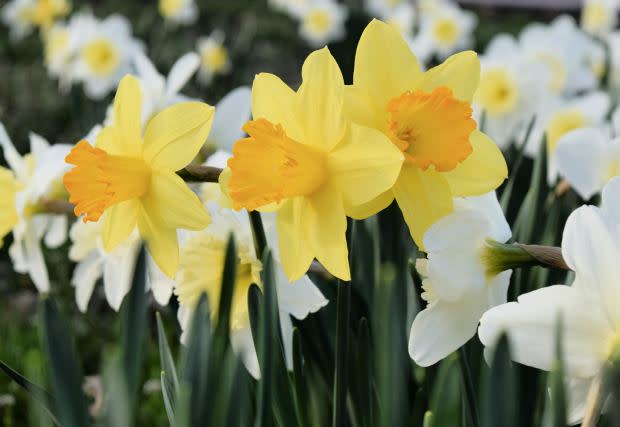
Daffodils are the March birth flower. Also called the narcissus (after the vain young man of Greek mythology), daffodils typically don't represent the ego at all. Instead, their meaning is often interpreted as rebirth, forgiveness and hope, as the flower is one of spring's earlier blooms.
While beautiful and easy to grow, these perennials are toxic to pets and humans if ingested, so keep your cats, dogs and hungry rugrats away from them.
Related: 31 Cat-Safe Plants That You Should Add to Your Collection Right Meow
April Birth Flower: Daisy
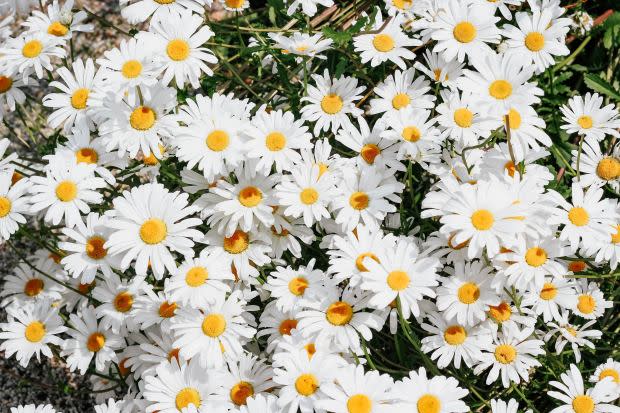
The daisy is an April birth flower. The flowers often represent innocence (they were associated with the Virgin Mary in ancient times) and love (how many petals have you picked about a crush?). Because they're spring-blooming flowers, daisies also often represent new beginnings and fresh starts. They've also been considered a sign of loyalty thanks to their hardiness.
April Birth Flower: Sweet Pea
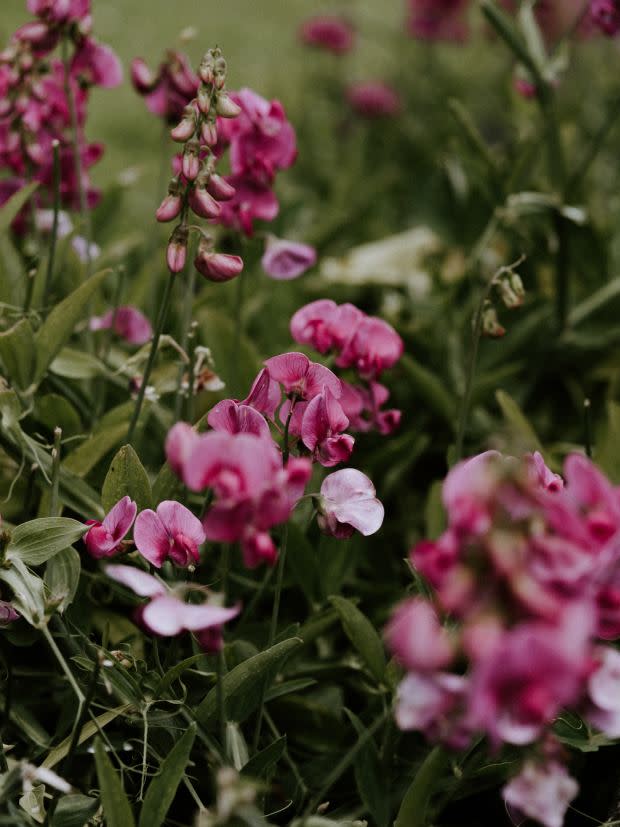
The other April birth flower is the sweet pea. Far more aesthetically pleasing than the legume, sweet pea flowers bloom typically in late spring and have butterfly-shaped blossoms. Thanks to their fragrant, sweet scent, they're often used to express gratitude and appreciation. They've also been used as symbols of friendship and fond farewells.
Be sure not to eat sweet peas, however: Despite sharing a name with something healthy, these are actually toxic to humans and animals if ingested.
May Birth Flower: Hawthorn
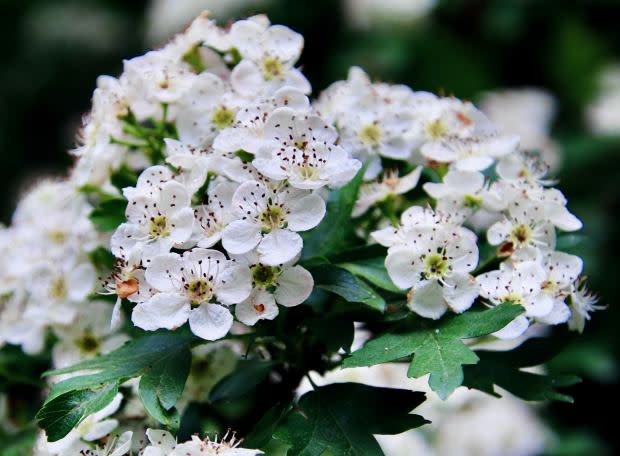
A May birth flower is the hawthorn. The hawthorn is a shrub in the rose family that typically blooms in May and can have white, pink or red flowers. It also has berries that are edible for humans.
Hawthorns are typically used to symbolize hope. Ancient Greeks commonly used hawthorn branches in weddings, and they represent fertility in some Pagan traditions. There are other fun historical interpretations too—Serbian folktales claimed that stakes made from hawthorn branches could be used in vampire slaying.
Related: Create Your Own Butterfly Paradise With These 35 Plants and Flowers That Attract Butterflies
May Birth Flower: Lily of the Valley
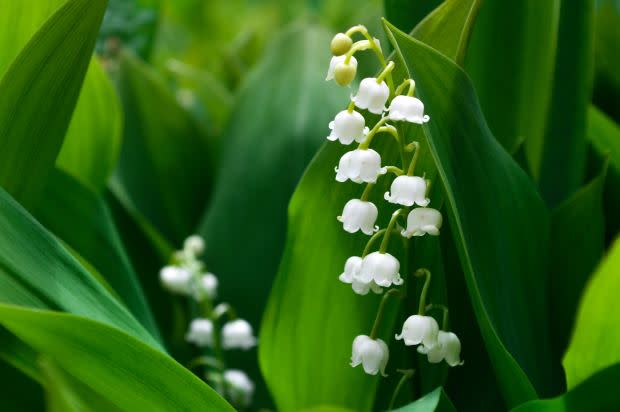
The other May birth flower is the lily of the valley.
The flower is often used in wedding bouquets (including Kate Middleton's!) for its sweet scent and is frequently associated with joy, motherhood and purity. The flower is also often associated with Christianity and is mentioned several times in the Bible.
It was Christian Dior's favorite flower and was used in his Diorissimo fragrance. It's currently used in some of the fashion house's homewares as well as a tribute to its founder.
June Birth Flower: Rose
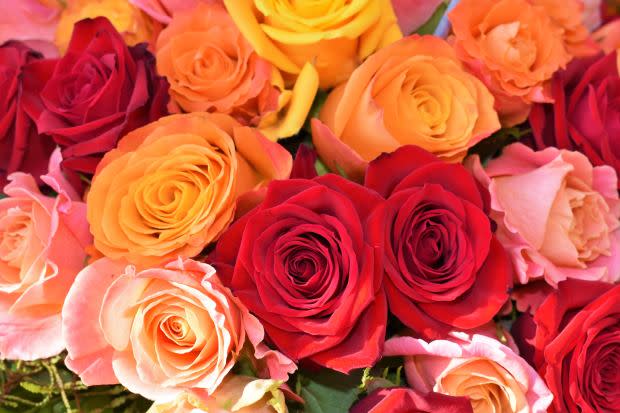
Roses are the June birth flower. These beautiful blooms come in an array of colors and are perennials that can keep coming back year after year in your garden.
Roses typically bloom in late spring or early summer and are beloved for their fragrance and beauty. Different color roses have different traditional meanings, with red roses being the most popular for their association with love and romance (especially around Valentine's Day!). Yellow roses are associated with friendship and forgiveness, white roses with innocence and new beginnings, pink roses with gratitude.
Related: 18 Rose Colors and Their Meanings To Avoid Sending the Wrong Message
June Birth Flower: Honeysuckle

Long beloved as one of the unofficial smells of warm weather months, the other June birth flower, honeysuckle, grows as a vine or a shrub and typically blooms late in summer. Honeysuckle attract pollinators, making them a particularly great flower for those trying to cultivate a garden.
Honeysuckle often symbolizes love and sweetness, appropriately enough! Honeysuckle nectar is edible and sweet for humans, but you'll want to keep it away from your pets, because it may be toxic to them.
July Birth Flower: Larkspur
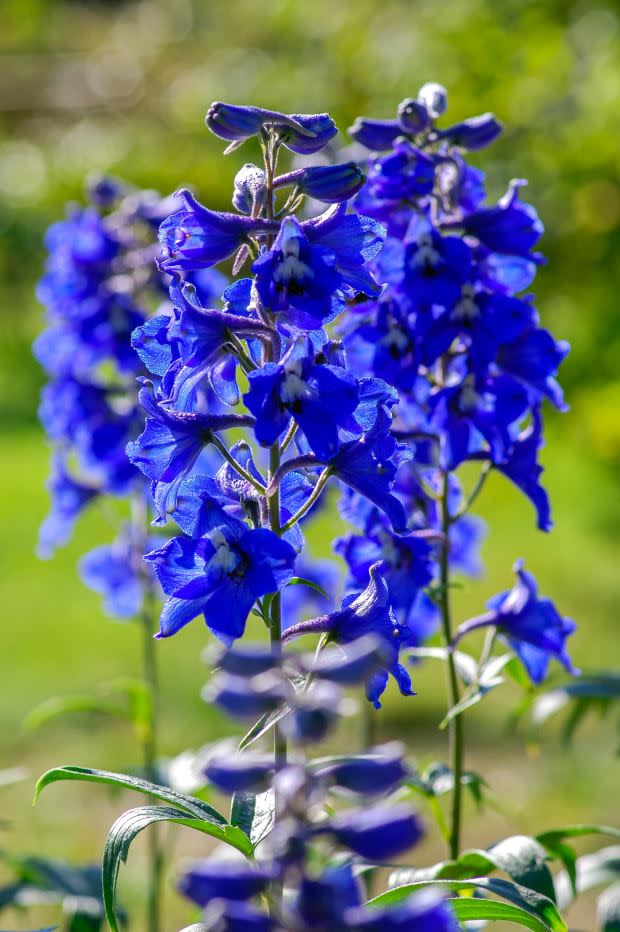
The larkspur is a July birth flower. These striking plants can have blue, pink, white and purple blossoms and stalks as high as eight feet tall.
Larkspur typically blooms between June and September. Larkspur is associated with protection, virtue and levity. Pink larkspur is associated with fickleness, purple with first love and white with joy.
July Birth Flower: Water Lily
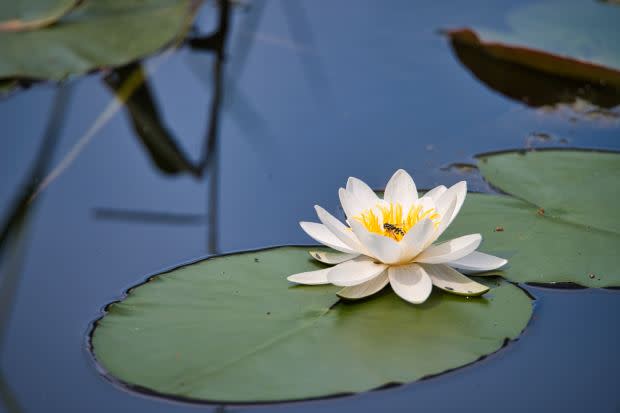
The second July birth flower is the water lily. In ancient Egypt, water lilies symbolized rebirth. In Buddhism, it is a symbol of enlightenment.
Related: Plant Your Feet in Comfortable Footwear—Here Are the 20 Best Gardening Shoes for Women
August Birth Flower: Gladiolus
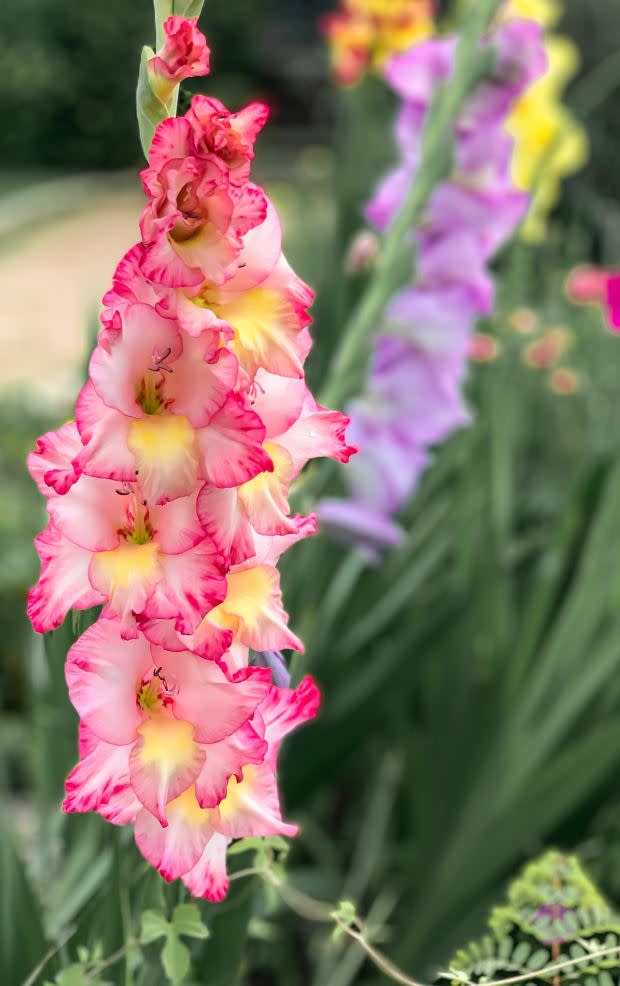
Gladiolus is an August birth flower. Also called a sword lily, the gladiolus comes in a broad color range, from pink, red and orange to violet and ivory hues. Gladiolus stalks can grow up to six feet in height.
The name is appropriate: Gladiolus flowers were associated with gladiators in ancient times and were often given to winners as a symbol of victory. They're commonly used today to symbolize integrity, strength, remembrance and admiration.
August Birth Flower: Poppy

Another August birth flower is the poppy. Famous for its seeds, often used in recipes for everything from lemon muffins to bagels, and for its rich, bold red hue, poppies also get an unfair rap for their use in opium production.
While red poppies are the most well-known, they can actually also come in purple, orange, yellow and white.
Poppies are most often used today as symbols of remembrance, especially on Armistice Day (Remembrance Day) in the British Commonwealth and on Veterans and Memorial Day holidays in the United States.
September Birth Flower: Aster
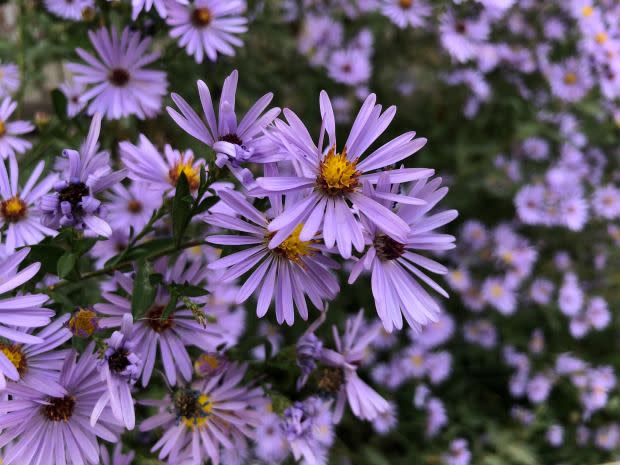
Aster is the primary September birth flower. Available in pink, purple, red, white and even blue, asters bloom in late summer and early fall.
The name "aster" comes from the Greek word for "star," and ancient Greeks believed the flowers bloomed from the tears of the goddess Astraea (associated with the September astrological sign Virgo), who was dismayed at how corrupt and generally gross Earth had become.
Today, asters typically symbolize love, wisdom, patience and faith.
Related: Cloudy Day? No Problem! 19 Best Vegetables and Plants To Grow in the Shade
September Birth Flower: Morning Glory
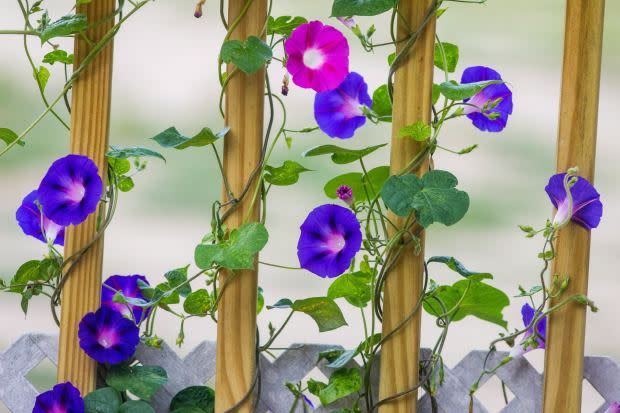
Morning glory is the second September birth flower. Grown on a vine, these brilliant blue-violet blooms have flowers that open in the early morning hours (surprise!) and close by the afternoon and evening.
Morning glories typically symbolize how fleeting beauty is in everyday life—as well as the fleeting nature of life itself.
October Birth Flower: Marigold
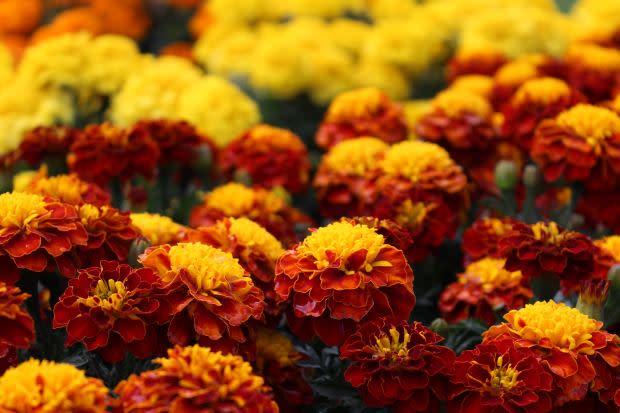
Though the month is often associated with the orange of pumpkins for Halloween, there's another orange association with October: The October birth flower is the marigold. Ancient Aztecs used marigolds for medicinal properties.
Marigold is edible and has a strong scent that actually repels a lot of pests (including aphids and the ever-dreaded mosquitoes!), so these are a great pick for a home garden.
Related: Avoid Getting Eaten Alive This Summer With These 25+ Plants That Repel Mosquitoes
October Birth Flower: Cosmos
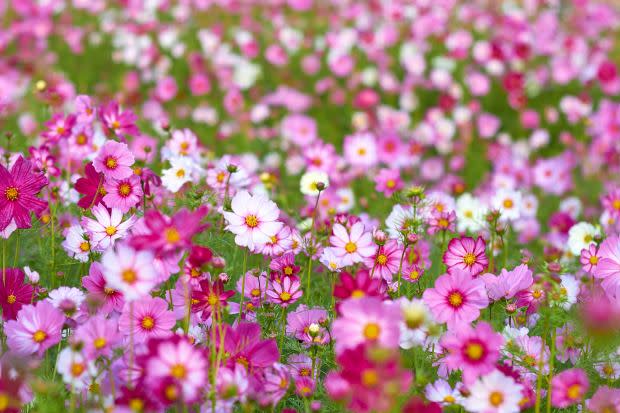
Cosmos are the second October birth flower. Often mistaken for daisies for their aesthetic similarities, cosmos can be pink, orange, yellow, red and white, and typically bloom in late summer through autumn.
Cosmos typically represent tranquility and peace, though they've also been associated with innocence and love.
November Birth Flower: Chrysanthemum
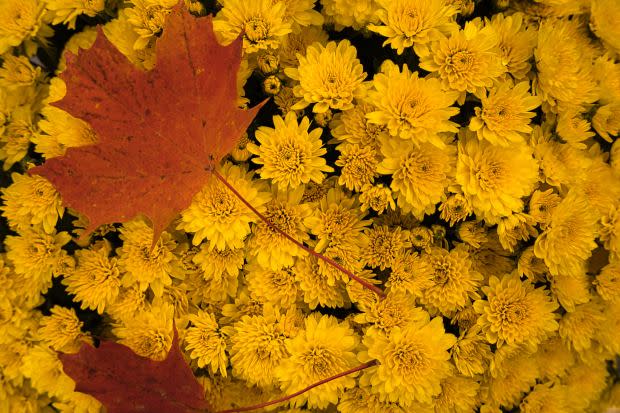
The November birth flower is the chrysanthemum, which typically blooms in late summer and fall. Chrysanthemums have a wide color range, including pink, purple, red, white, yellow and orange.
Originating in China, chrysanthemums are a symbol of good luck and happiness there. Elsewhere in the world, they're often interpreted by color. Purple chrysanthemums are a sign of get well wishes, while red is a sign of passionate love, white of innocence and yellow of sorrow.
Related: Feel Better Soon! 100+ Thoughtful Messages To Write in a Get Well Card
November Birth Flower: Peony
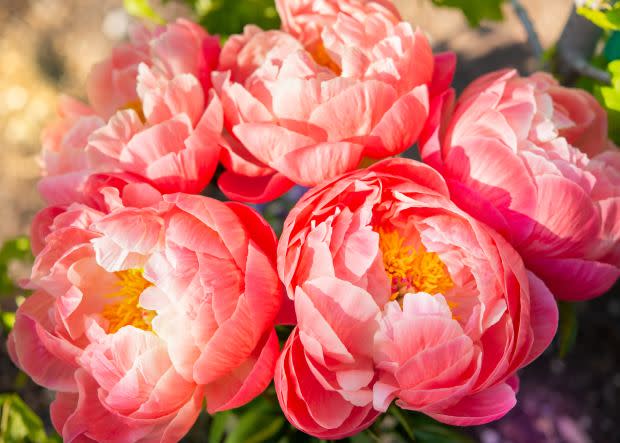
The peony is another November birth flower. They typically bloom in late spring and early summer and have a sweet fragrance. They come in pink, red, yellow and white varieties, each with different symbolic meanings: pink represents romance and love, red passion and respect, yellow prosperity and white innocence and humility.
December Birth Flower: Paperwhites
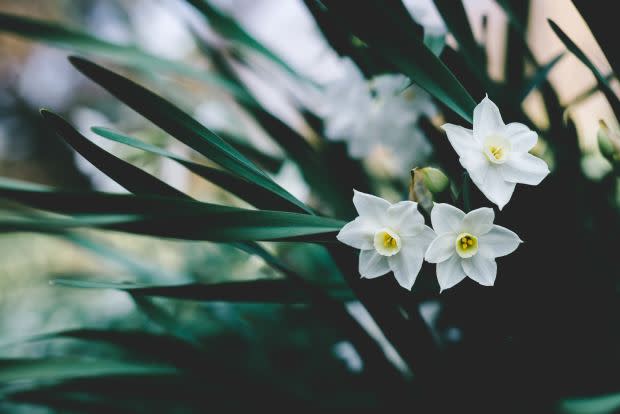
One December birth flower is the paperwhite, a white daffodil. They're considered a sign of rebirth, hope and innocence. As indoor plants, they often bloom near the holiday season. Outdoors, like other daffodils, they typically blossom in early spring.
December Birth Flower: Holly
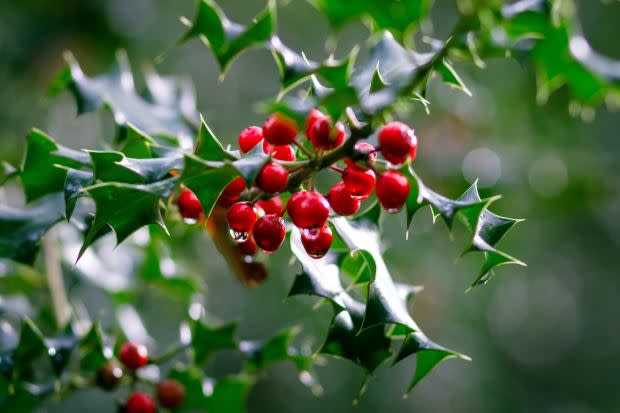
Oh by gosh, by golly! The December birth flower is holly, a shrub and a holiday decor staple famous for its brilliant red berries and sharp green leaves. They typically bloom in late spring to early summer and can keep their rich berries and leaves throughout winter.
In many cultures, holly symbolizes fertility and good luck. In Christianity, has been associated with Jesus' crown of thorns from the crucifixion. Its evergreen nature is also associated with eternal life.
Next up, It’s Actually Surprisingly Easy Being Green! 55+ Plants You Can Grow in a Hydroponic Garden
